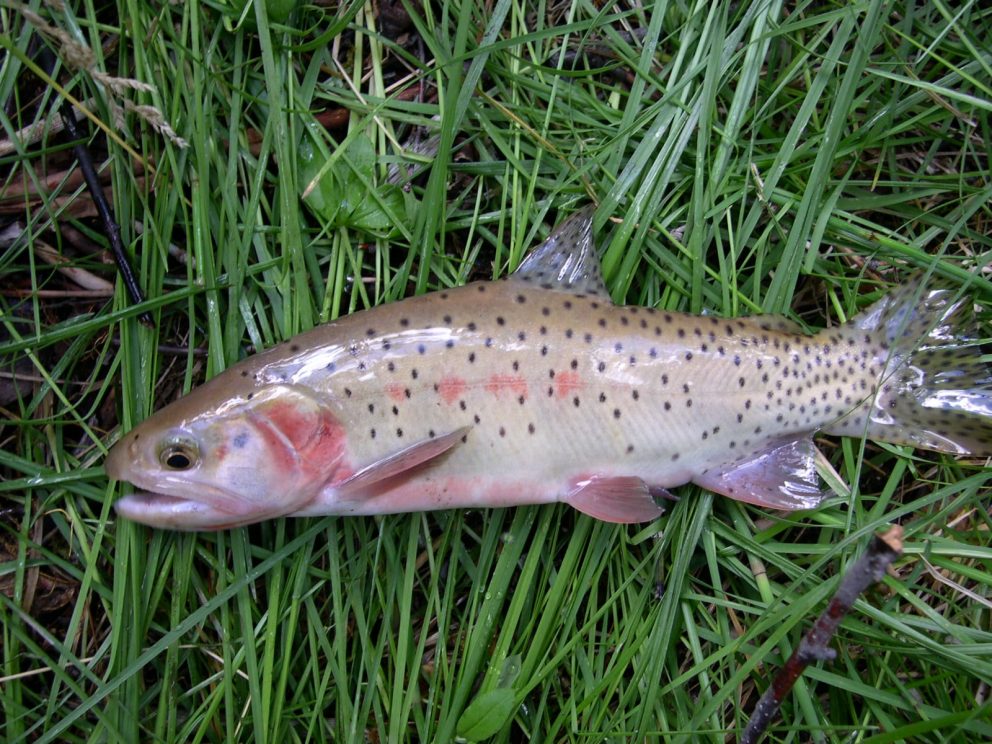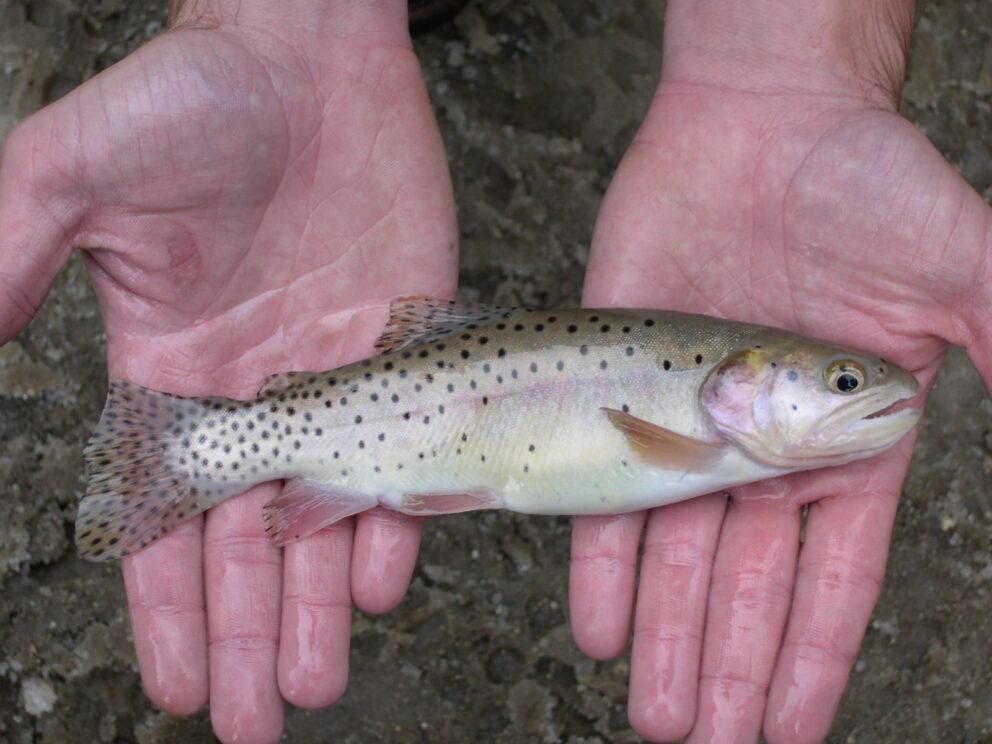- SCIENTIFIC NAME
- Oncorhynchus clarkii utah
- CLASSIFICATION
- Fish
- LIFE SPAN
- 7-8 Years
- SIZE
- 7-20” | 1-15lbs
- STATE CONSERVATION STATUS
-
- Unprotected
- FEDERAL CONSERVATION STATUS
- Least Concern
- GAME STATUS
- Game
- Washoe
- Humboldt
- Pershing
- Churchill
- Mineral
- Lyon
- Douglas
- Carson City
- Storey
- Elko
- Lander
- Eureka
- White Pine
- Esmeralda
- Nye
- Lincoln
- Clark
Habitat & Range
Bonneville cutthroat trout (BCT) are native to the Bonneville basin of Idaho, Nevada, Utah, and Wyoming. The Bonneville basin covers approximately 51,216 square miles within the Great Basin and once contained the largest of the ancient pluvial lakes, Lake Bonneville. BCT in Nevada reside in streams flowing eastward from the north Snake (Mt. Moriah area) and south Snake Range (Great Basin National Park) along the Nevada / Utah border in the extreme eastern portion of the state.
Threats
- Competition
- Hybridization/Introgression
- Predation
Natural History
Bonneville Cutthroats are descendants of the Cutthroat Trout that was once found in the Pleistocene aged Lake Bonneville which ranged from eastern Nevada to southern Idaho and northern Utah. When Lake Bonneville shriveled into the Great Salt Lake, it became to salty for life aside from the brine shrimp that can be found their today. With the loss of Lake Bonneville, the cutthroats became isolated in smaller populations of streams, rivers, reservoirs and ales. Depending on the location and their origination the Bonneville Cutthroats feed on a wide variety of prey, from insects to smaller fish of many species.
Fun Facts














